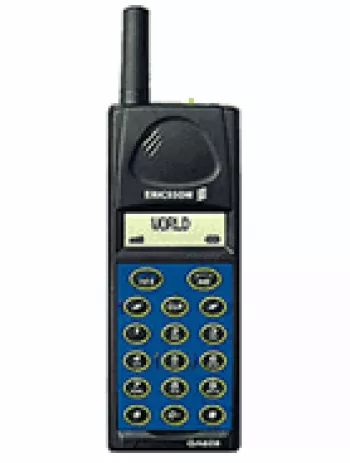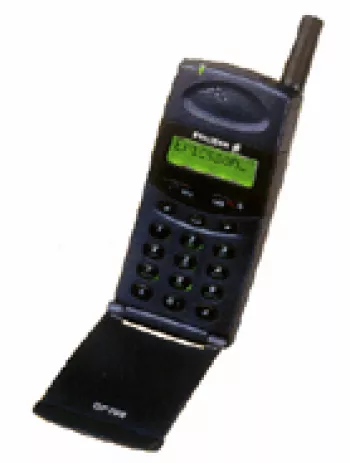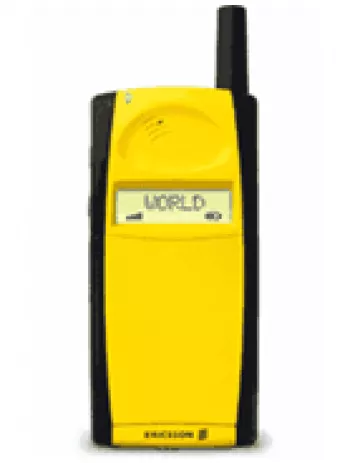
Overview of Ericsson T65
The Ericsson T65, released in the fourth quarter of 2001, is a classic example of early 2000s mobile phone technology. As a feature phone, it was introduced during a time when mobile phones were primarily used for voice communication and basic messaging. Comprehensive in its basic offerings, the T65 helped set the stage for more interactive mobile communications in subsequent decades.
Design and Build
The Ericsson T65 features a compact design with dimensions of 105 x 49 x 21 mm, which fits easily in the hand or pocket. Weighing only 94 grams, it was considered lightweight for its time. The phone uses a mini-SIM and was available in three different hues: Cosmic Blue, Stardust Yellow, and Polar Blue, offering a touch of personalization to users. The build quality is robust, making it resilient to the daily challenges faced by mobile devices.
Display
The T65 features a grayscale graphic display with a resolution of 101 x 67 pixels, accommodating up to six lines of text. While modest by today's standards, this display type was typical of the era, allowing for basic text communication and navigation through the phone’s menu system. It is easy to read under various lighting conditions, enhancing usability, despite lacking color and advanced graphical interfaces.
Network and Connectivity
The Ericsson T65 operates on GSM technology, supporting the 900 and 1800 frequency bands. This enabled it to deliver reliable coverage across different regions around the world, making it versatile for international use. The inclusion of GPRS allowed basic internet connectivity, which was a significant step forward in the evolution towards more internet-focused mobile applications. However, it lacked advanced connectivity options such as EDGE, WLAN, Bluetooth, and positioning capabilities, seen in later models.
Battery and Performance
The device is powered by a removable Li-Ion battery with a capacity of 540mAh. This allowed for a standby time ranging between 160 to 300 hours and a talk time of approximately 2.5 to 11 hours. For basic and intermittent use typical of the time, this battery life was largely adequate. The choice of a removable battery also meant that users could easily replace it if needed, extending the life of the device.
Storage and Memory
Storage on the Ericsson T65 is limited, with no card slot for expansion. It supports phonebook storage of up to 300 contacts, each with up to 11 fields, which was more than sufficient for personal use at the time. For call records, it can maintain a list of 30 received, dialed, and missed calls, aiding users in tracking their recent communications effortlessly.
Sound and Alerts
The T65 does not feature a loudspeaker, nor does it support a 3.5mm headphone jack. Alert types include vibration and downloadable monophonic ringtones, a nod to the customization options sought by users during this period. Additionally, it featured a composer for creating personalized ringtones, a popular pastime among users in the early 2000s.
Messaging and Internet
Messaging capabilities include SMS, Email, and EMS, supporting basic multimedia content in messages. The WAP 1.2.1 browser allowed users to access simple mobile internet services. This was rudimentary but represented an early attempt to expand the mobile phone’s role beyond voice communication into a more generalized communication device.
Additional Features
The Ericsson T65 includes various utilities typical of its era, such as clock and alarm functions, and simple games to entertain users. While it does not support Java-based applications – an emerging trend during its time – it served its purpose for communication and basic entertainment.
Conclusion
The Ericsson T65 is an emblematic product of its time, representative of the early 2000s mobile market where phones began their transition from basic communication tools to more multifunctional devices. Its feature set, while basic by today’s standards, provided a foundation for mobile phone evolution. This device holds nostalgic value for many and serves as a reminder of the rapidly advancing pace of mobile technology.
Key Features of Ericsson T65
- Compact and Lightweight Design: Weighs only 94 g and measures 105 x 49 x 21 mm.
- GSM Connectivity: Supports GSM 900 / 1800 networks.
- Grayscale Graphic Display: Offers 101 x 67 pixels resolution.
- Phonebook Capacity: Can store up to 300 contacts with 11 fields each.
- Long Battery Life: Stand-by time of 160 to 300 hours, and talk time of 2.5 to 11 hours.
- Messaging Capabilities: Supports SMS, Email, and EMS.
- Downloadable Monophonic Ringtones: Includes vibration alerts and a composer for custom ringtones.
- WAP Browser: Features WAP 1.2.1 for internet browsing.
- Available in Multiple Colors: Offered in Cosmic Blue, Stardust Yellow, and Polar Blue.
- Games Included: Comes with built-in games for entertainment.
Key Disadvantages of Ericsson T65
- Display limited to grayscale graphic with low resolution (101 x 67 pixels).
- Lack of expandable memory due to absence of a card slot.
- No integrated camera for capturing images.
- Absence of loudspeaker function; only vibration and monophonic ringtones available.
- No support for modern connectivity options such as Bluetooth and WLAN.
- Standard 3.5mm audio jack is unavailable.
- Lacking positioning services like GPS.
- No built-in radio functionality.
- Limited WAP 1.2.1 Browser, not suitable for modern web browsing needs.
- No Java support for running additional applications.


View Also
More Phones
All Rights Reserved +14266 Phones © Mobilawy 2025

























